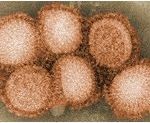
A novel variant of H1N1 flu has emerged in Asia with a genetic adaptation giving some resistance to Roche’s Tamiflu and GlaxoSmithKline’s Relenza, the two mainstay drugs used to tackle the disease.
Researchers said more than 30% of H1N1 flu infection samples from people in northern Australia, and more than 10% of those in Singapore, collected during the early months of 2011 had mildly reduced sensitivity to the two drugs. There was no significant reduction in sensitivity to peramivir, an experimental flu drug from BioCryst Pharmaceuticals.
The new variant has also been detected in other parts of Asia-Pacific, according to a report by the World Health Organization (WHO) Collaborating Center for Reference and Research on Influenza in Melbourne, published in the journal Eurosurveillance.
Although this genetic mutation has been seen before in a small number of human seasonal flu and H5N1 bird flu cases, it has not previously been reported in the H1N1 novel flu strain that is believed to have originated in North American swine.
H1N1 flu emerged in Mexico and the United States in March 2009 and spread rapidly across the world. The WHO believes about 18,450 people died from the virus up to August 2010, including many pregnant women and young people. The WHO declared the pandemic over in August 2010.
The new virus has not gone away, however, and seasonal flu vaccines being offered across the world include the H1N1 strain. Flu vaccines are made by several drug makers including GlaxoSmithKline, Sanofi and Novartis.
Source: Eurosurveillance

















